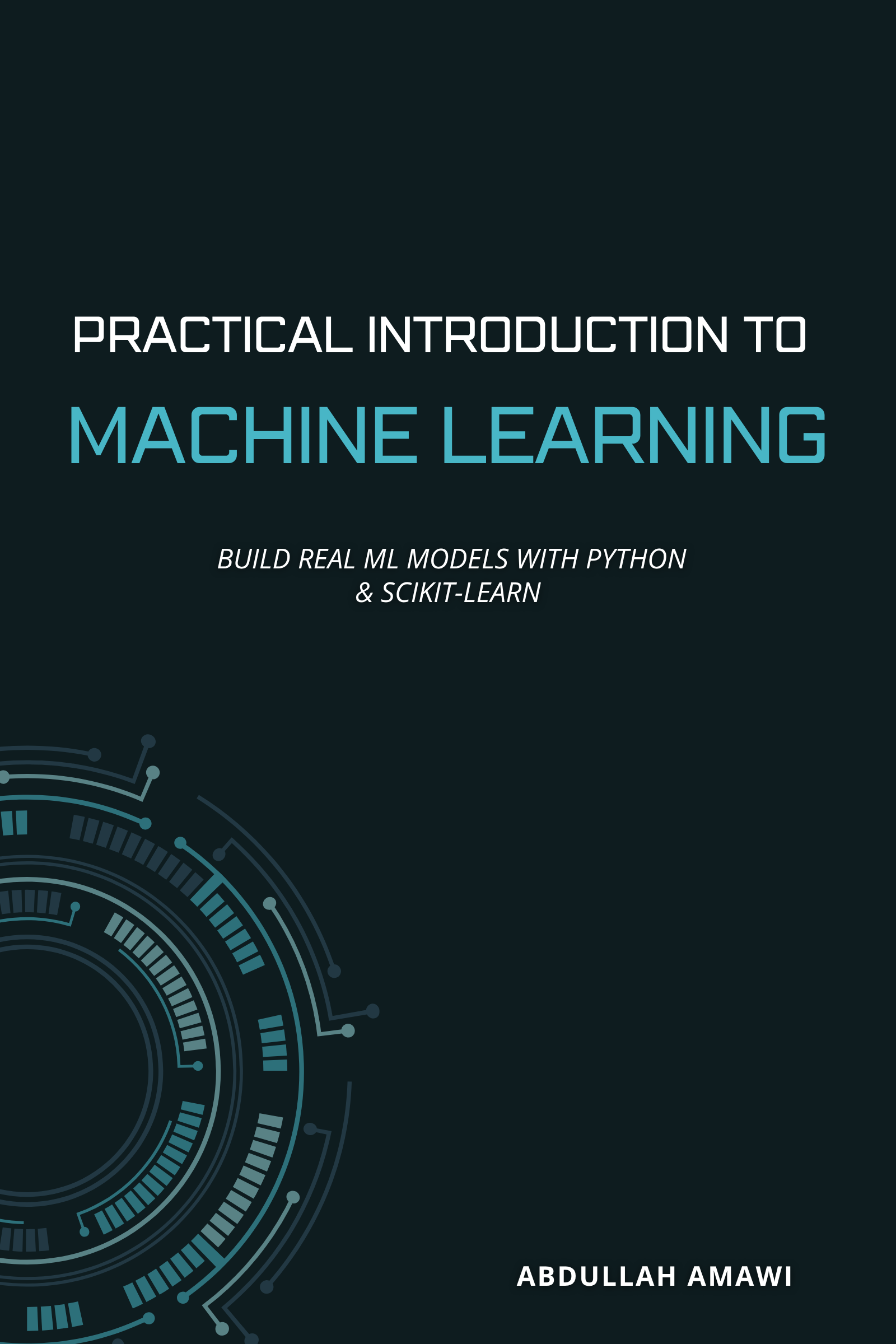Practical Introduction to Machine Learning
Build Real ML Models with Python & Scikit-learn
Preface

Welcome to Practical Introduction to Machine Learning!
This book is designed for beginners and those seeking a refresher on machine learning fundamentals. It takes a hands-on, code-first approach using Python’s most popular ML library: scikit-learn.
Who This Book Is For
- Beginners starting their ML journey
- Practitioners wanting a quick refresher
- Students looking for practical examples
- Anyone who learns best by doing
What You’ll Learn
By the end of this book, you’ll be able to:
- Prepare and clean real-world datasets
- Build and evaluate regression models
- Create classification systems
- Apply unsupervised learning techniques
- Tune models for optimal performance
- Handle common real-world ML challenges
Prerequisites
- Basic Python knowledge
- Familiarity with NumPy and Pandas (helpful but not required)
- No prior ML experience needed!
Book Structure
This book is organized into 11 chapters, progressing from foundational concepts to advanced techniques. Each chapter includes interactive code examples that you can run and modify.
Let’s get started!
About the Author
Abdullah Amawi is a Graduate Research Assistant at Georg-August-Universität Göttingen, where he specializes in AI and Machine Learning with a focus on high-performance computing systems. He teaches machine learning at the master’s level, bringing both academic rigor and practical industry experience to his instruction.
Abdullah’s master’s thesis, “Optimizing I/O Performance of Scalable ML Workflows in HPC Systems,” reflects his deep expertise in making machine learning efficient and scalable. With over 15 years of technical consulting experience and hands-on work managing GPU infrastructure for AI research labs, he bridges the gap between theoretical ML concepts and real-world implementation.
As the creator of TensorRigs.com, Abdullah helps researchers, developers, and ML enthusiasts make informed decisions about AI hardware through spec-driven analysis and practical recommendations. His unique perspective comes from working directly with large-scale ML workflows in HPC environments, giving him insight into what really matters for production machine learning systems.
Abdullah is passionate about making AI and machine learning accessible, practical, and easy to understand. He believes that the best way to learn ML is through hands-on experience with real datasets and clear, concise explanations—a philosophy that guided the creation of this book.
Connect: Portfolio | TensorRigs